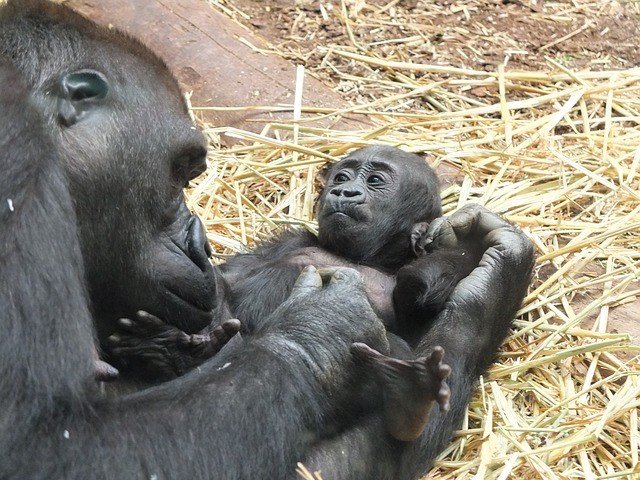Among all the monkeys, Gorillas are well known for their size and strength. They have certain unique features which make them very interesting to study. We have gathered a complete set of Gorilla Facts For Kids which will enable the kids to learn All About Gorillas. Here kids are going to learn the scientific classification, description, size, weight, diet, habitat, reproduction, lifespan, species, population, behavior, and many other interesting facts about Gorillas.
Gorilla Facts For Kids
1. What is a Gorilla
Gorillas are naturally herbivorous and ground-dwelling apes.
- They are the inhabitants of central Sub-Saharan African forests.
- Today, Gorillas are the largest primates on earth.
- After the Bonobos and Chimpanzees, Gorillas are the most closely related to human beings.
- About 95-99% of their DNA is similar to that of human beings.

2. What is the Scientific Name for a Gorilla – Gorilla Scientific Name
- There are two species of Gorilla – The Eastern Gorilla and The Western Gorilla.
- The scientific name for the Eastern Gorilla is “Gorilla beringei” and that for the Western Gorilla is “Gorilla gorilla”.
3. Gorilla Classification – Gorilla Taxonomy
| Kingdom: | Animalia |
| Phylum: | Chordata |
| Class: | Mammalia |
| Order: | Primates |
| Suborder: | Haplorhini |
| Infraorder: | Simiiformes |
| Family: | Hominidae |
| Subfamily: | Homininae |
| Tribe: | Gorillini |
| Genus: | Gorilla |
4. Gorilla Family
- Gorilla belongs to the Hominidae family.
- It is a family of primates whose members are called hominids or great apes.
- This family includes four genera that contain eight existent species.
- One of these genera is the genus Gorilla, which includes the Western Gorilla and Eastern Gorilla.
- Genus Pongo includes the Sumatran, Tapanuli and Bornean Orangutans.
- Genus Pan includes the Bonobo and the common Chimpanzees.
- And genus Homo includes the modern Humans (Homo sapiens), their extinct relatives (such as the Neanderthals), and their ancestors (for example the Homo erectus).
5. Gorilla Name
- The origin of the word “Gorilla” is the history of a Carthaginian explorer, Hanno the Navigator (approximately 500 BC), who was on an expedition on the coast of West Africa to the region that is now Sierra Leone.
- There, he and his fellows unexpectedly met savage people, a larger part of whom were women with hairy bodies, who were called by their translators as “Gorillae”.
- Later, the word “Gorilla” was used as a name of species, however, it is unknown whether these ancient Carthaginian expediters encountered actual gorillas or another species of monkeys, apes, or humans.
- The source of the word “Gorilla” is Ancient Greek “Gorillai” which means “the tribe of hairy women”.
6. What is a Female Gorilla Called – Female Gorilla Name
- Female gorillas do not have any special gender-based names.
- However, adult male gorillas are called “Silverbacks” because of the growth of silver hair on their backs and hips after the age of 12 years.
- The sexually mature younger male gorillas of ages between 8 to 12 years are called “Blackbacks” due to the lack of silver hair on their backs.
- The Blackbacks are lower in position than the Silverbacks.

7. Gorilla Characteristics – Gorilla Description
- Gorilla is the biggest among all the primates in terms of size and weight.
- Gorillas are herbivores and consume plant materials as the main component of their diet. Some Gorilla subspecies also eat insects.
- Gorillas have larger stomachs than their chest due to their enlarged intestines which digest huge amounts of fibrous vegetation that they eat every day.
- Their arms muscles are larger and stronger than their legs muscles as opposed to humans.
- They have 32 teeth just like humans. Similarly, they also have two sets of teeth in their lifetime. The first set (baby teeth) falls and is replaced by another permanent set (adult teeth).
- Unlike monkeys, Gorillas do not have tails.
- Unlike chimpanzees, Gorillas build nests where they rest.
- Male Gorillas develop patches of silver hair on their back after the age of 12, due to which they are called Silverbacks.
- Gorillas live in “troops” comprising of one Silverback and several females and young Gorillas.
- Gorillas are intelligent and have been observed using tools in the wild.
- Some individual Gorillas have been taught sign language in captivity.
- All the species of Gorilla are critically endangered.
8. How Big is a Gorilla – Gorilla Size – How Tall are Gorillas – Gorilla Height
- Adult male Gorillas are about 4 ft 7 to 5 ft 11 in (1.4 to 1.8 meters) tall, while females are 4 ft 1 to 4 ft 11 in (1.25 to 1.5 meters) tall.
- The arms of male Gorillas span from 7 ft 7 to 8 ft 6 in (2.3 to 2.6 meters). Female gorillas have a short arm span than males.
- The tallest Gorilla ever recorded was a 5 ft 6 in (1.95 meters) male with a chest of 6 ft 6 in (1.98 meters), an arm span of 8 ft 10 in (2.7 meters), and weighed 219 kg.

9. How much does a Gorilla Weigh – Gorilla Weight – Male Gorilla Weight
- The weight of an adult male Gorillas ranges from 136 to 195 kg (300 to 430 pounds).
- The weight of adult females ranges from 68 to 113 kg (150 to 250 pounds), which is about half the weight of adult males.
- In 1970, Groves calculated the average weight of 47 wild male adult Gorillas to be 143 kg.
- In 1997, the average weight of 19 male adult Gorillas was calculated to be 169 kg by Smith and Jungers.
Largest Gorilla Weight
- The heaviest wild Gorilla ever recorded was a silverback male with a weight of 267 kg (589 pounds) and a height of 6 ft (1.83 meters) in the Ambam town of Cameroon.
Largest Gorilla in Captivity
- The recorded largest Gorilla in captivity was Phil the Gorilla, a silverback male raised in the Saint Louis Zoo (USA), weighing 390 kg (860 pounds), and died in December 1958.
10. Gorilla Face
- The face structure of Gorilla is described as “Mandibular Prognathism”.
- Mandibular prognathism is a condition in which the lower jaw or jawbone (mandible) is more protruded than the upper jawbone (maxilla).

11. How Long do Gorillas Live – Gorilla Lifespan – Average Lifespan of a Gorilla
- The average lifespan of Gorilla is between 35 and 40 years in the wild.
How Long do Gorillas Live in Captivity
- Gorillas live in captivity for more than 50 years.
- Colo was the oldest Gorilla ever recorded that died in 2017 at the age of 60 years.
Gorilla Life Expectancy
- The life expectancy of a Gorilla in the wild is about 30 to 35 years.
- However, in captivity, their life expectancy increased up to 50 years.
12. What do Gorillas Eat – Gorilla Diet
The diet of Gorillas varies within and between species, however, all Gorillas are herbivores.
Mountain Gorillas
- The diet of mountain Gorillas comprises leaves, foliage, stems, shoots, pith, and fruits to some extent.
- They live in 3 to 15 km square area ranges and travel daily for about 500 meters (0.31 miles).
- The diet of mountain Gorillas is readily available and distributed widely and they don’t have to compete for food with each other.
Eastern Lowland Gorillas
- The diet of Eastern lowland Gorillas is diverse and changes with the seasons.
- They eat leaves and pith, but also rely on fruits, which make up about 25% of their diet.
- Their living area ranges from 2.7 to 6.5 km square, with a daily movement of 154 to 2280 meters.
- Eastern lowland Gorillas also eat ants.
Western Lowland Gorillas
- Western lowland Gorillas rely on fruits more than any other Gorilla subspecies, due to which they have wider living area ranges of 7 to 14 km2, with an average per day movement of 1,105 meters (0.687 mile).
- Western lowland Gorillas also eat insects like ants and termites.
Learn more: What do Gorillas Eat
Are Gorillas Herbivores?
- Yes, Gorillas are herbivores and eat plants.
13. Where do Gorillas Live – Gorilla Habitat
- The distribution of Gorillas is uneven and they live in diverse habitats and altitudes that range from montane forests to marshlands and swamps.
- Congo River and its effluents mainly separate the distribution range of the two species of Gorilla.
- Eastern Gorillas inhabit East-Central Africa, and Western Gorillas inhabits West Central Africa.
- Mountain Gorillas (a subspecies of Eastern Gorilla) live at higher altitudes in the montane forests, while Eastern Lowland Gorillas (also a subspecies of Eastern Gorilla) live at a lower altitude in sub-montane forests as well as in lowland and montane bamboo forests.
- Western Lowland Gorillas (subspecies of Western Gorilla) live in lowland and swamp forests, while Cross River Gorillas (another subspecies of Western Gorilla) live in the sub-montane forests.
- Gorillas build nests by a simple combination of leaves and branches, where they spend their resting time.
- Each individual builds their separate nest, except the baby Gorillas who stay with their mothers in the same nest.
- After the age of three, baby Gorillas also start constructing their nests near their mothers’ nests.
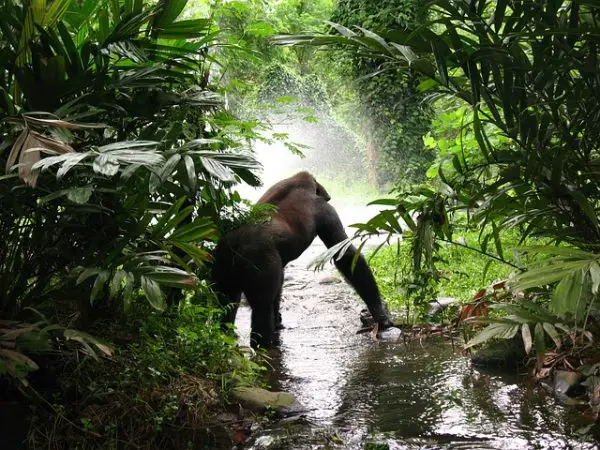
Gorilla Natural Habitat
- The subtropical or tropical forests in Sub-Saharan Africa are the natural habitat of Gorillas.
- Mountain Gorillas naturally inhabit and survive in the Albertine Rift montane forests of Africa.
- Lowland Gorillas inhabit the lowland marshes and swamps where the sea level is low and also live in dense forests.
- Eastern Lowland Gorillas live in the border region of the Democratic Republic of the Congo with Rwanda.
- While Western Lowland Gorillas live in the Central West African Countries.
14. Gorilla Habitat Map
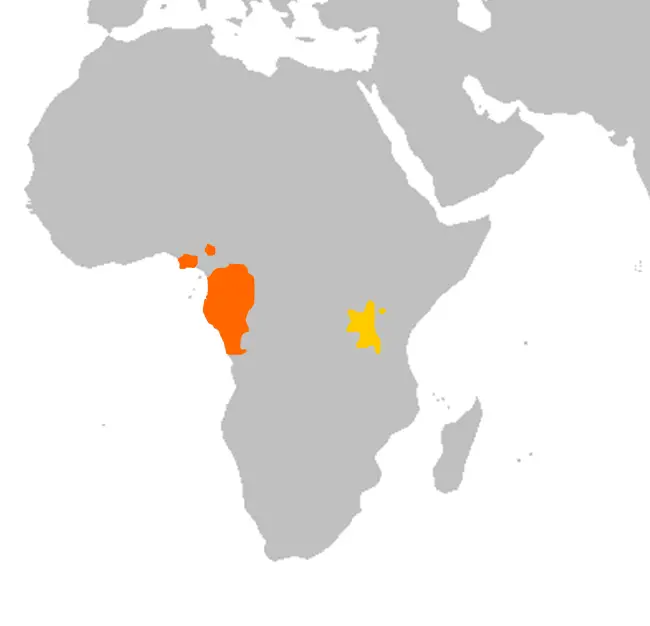
15. Male Gorillas – Silverback Gorilla
- Male Gorillas develop a silver patch of hair on their backs with maturity, due to which they are called Silverbacks.
- Silverbacks are sexually mature adult male Gorillas typically more than 12 years of age.
- Male Gorillas also develop large canine teeth with maturity.
- Every silverback has his group of a female, younger male, and infant Gorillas called a “troop”.
- Every silverback is the leader of his troop and is responsible for the safety, decision making, and movements determination of the troop.
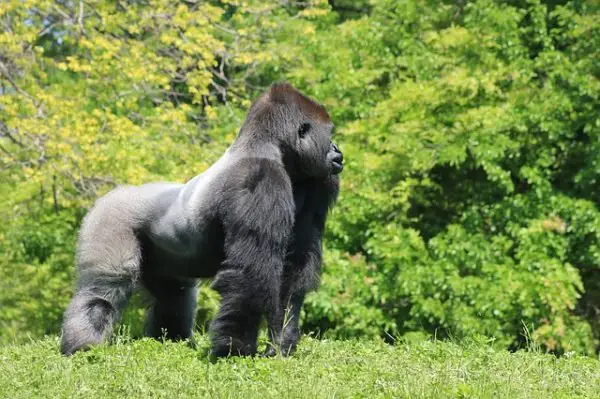
16. Baby Gorilla Facts
- Baby Gorillas are dependent and need special care for survival that is provided by their mothers.
- Male Gorillas, especially Silverbacks, do not take care of infants, however, in their troops, they have special supportive relationships with infants, socializing them with other younger gorillas and providing them protection from any aggression within the troop.
- For the initial five months, the infants remain close to their mothers and mothers stay close with the Silverback for shield.
- The infants sleep in the same nest with their mothers and are also fed by mother’s milk at least one time per hour.
- After the age of five months, they start breaking contact with their mothers gradually.
- At the age of 18 to 21 months, the infants regularly stay away from their mothers for short distances and are fed by mothers only once in two hours.
- At the age of 30 months, infants and mothers spend only half of their time together.
- At the age of 3 years, their juvenile period starts that lasts until the age of 6 years.
- Gorilla offspring are weaned at this age and start sleeping in separate nests.
What is a Baby Gorilla Called?
- A baby Gorilla is simply called an infant.

17. Gorilla Reproduction – Gorilla Life Cycle
- The sexual maturation age of female Gorillas is usually 10 to 12 years in the wild, however, in captivity, they mature earlier.
- Male Gorillas mature at the age of 12 to 13 years.
- Usually, the male and female Gorillas mate at the age of 12 and 8 years, respectively.
- Their gestation period lasts for 257 days, which is about 8.5 months.
- Gorillas usually bear one baby at a time and rarely twins.
- For about 3 years, the baby Gorilla depends on the mother to survive.
- Gorillas live for 35 to 40 years in the wild and more than 50 years in captivity.
Gorilla Gestation
- The gestation period of a Gorilla is about 8.5 months (257 days).
How Many Offsprings do Mountain Gorillas have in a Year?
- The mountain Gorilla bears one offspring at a time, however, they sometimes give birth to twins (which is very rare) after the gestation period of 8.5 months.
18. How many Gorillas are Left in the Wild – Gorilla Population
- Gorilla is one of the critically endangered animals on the IUCN Red List.
- The existing population of Western Lowland Gorillas is about 100,000 in the wild, and 4,000 in captivity. It is considered the most populous of all the Gorilla subspecies.
- The population of Cross River Gorillas is less than 250 according to a 2014 estimation, and are considered as the rarest great apes of the world.
- Eastern Lowland Gorillas in the wild are about 5,000 in the wild and only 4 in captivity.
- Mountain Gorillas are about 880 in the wild and zero in captivity and are considered the most severely endangered.
- Habitat destruction and poaching (illegal hunt) for the trade of bushmeat are major threats to the survival of Gorillas.
19. Types of Gorillas – Gorilla Species
- There are two species of the genus “Gorilla”
- Western Gorillas (Gorilla gorilla) – Two Sub-species:
- Western Lowland Gorilla (Gorilla gorilla gorilla)
- Cross River Gorilla (Gorilla gorilla diehli).
- Eastern Gorillas (Gorilla beringei) – Two Sub-species:
- Eastern Lowland Gorillas (Gorilla beringei graueri)
- Mountain Gorillas (Gorilla beringei beringei).
- Western Gorillas (Gorilla gorilla) – Two Sub-species:
20. Mountain Gorilla Facts
- Mountain Gorilla (Gorilla beringei beringei) is a subspecies of the Eastern Gorilla.
- There are two populations of Mountain Gorilla.
- One that is listed by the IUCN as critically endangered, is found in the four National Parks of Central African countries.
- The other population is found in the Bwindi Impenetrable National Park of Uganda.
- According to a 2016 estimation, the existing Mountain Gorillas are only 880 in the wild.
- Mountain Gorillas have long and thick body hair than the other subspecies of Gorillas.
- They are primarily quadrupedal (use four legs or limbs for locomotion), however, it is capable to run bipedally (use two limbs for locomotion) on the hind limbs for up to 20 feet (6 meters).
- They are diurnal and remain active during the daytime while sleeping at night.
- They live in groups and are highly social.
- Generally, Mountain Gorillas are very shy and kind and rarely show severe aggression.
- They use different vocalizations for group communication within dense forests.
- Mountain Gorillas are afraid of water and can cross water streams only if they avoid getting wet. They also do not like rain.
- Mountain Gorillas are also naturally scared of various insects and reptiles.
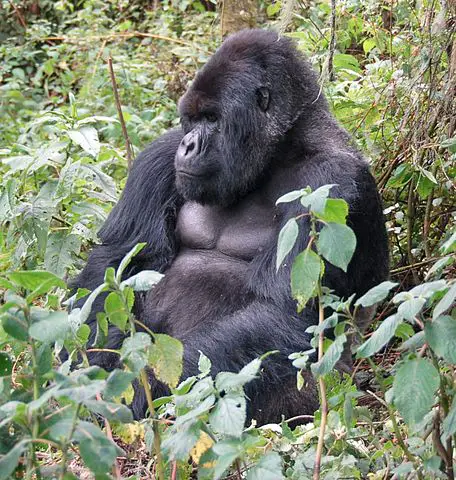
21. Eastern Lowland Gorilla
- Eastern Lowland Gorilla (scientific name; Gorilla beringei graueri) is a subspecies of Eastern Gorilla
- They are also called Grauer’s Gorillas and are native to the forests of the eastern Democratic Republic of Congo.
- The Eastern Lowland Gorilla is the largest of all the four Gorilla subspecies and is also the largest among all the living primates.
- The Eastern Lowland Gorilla has a coat color identical to Mountain Gorilla, however, it has shorter hair on its head and body.
- Like other Gorilla subspecies, male Eastern Lowland Gorillas also develop silver patches of hair on their backs with maturity.
- According to a 2016 estimation, the existing Eastern Lowland Gorillas in the wild is only about 3,800, while this number was about 5,000 in 2004.
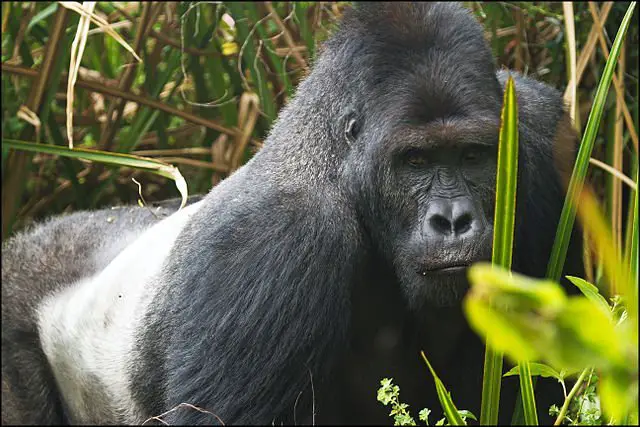
22. Western Lowland Gorilla
- Western Lowland Gorilla (scientific name; Gorilla gorilla gorilla) is a subspecies of Western Gorilla that is found in the montane forests of Central Africa.
- The Western Lowland Gorilla is the smallest among all the sub-species of Gorilla.
- This Gorilla sub-species also exhibit sexual dimorphism (a condition in which the male and female of the same species have different characteristics other than the dissimilarities in their sexual organs).
- Snowflake, the only albino Gorilla is known, was also a wild Western Lowland Gorilla.

23. Gorilla Behaviour – Interesting Facts about Gorillas
- A whole day of Gorillas is synchronized, divided into periods of rest, travel, and feeding.
- Gorilla is a highly social animal and usually lives in particular groups called “troops”.
- A troop generally has many female adult Gorillas, their offspring, and one silverback who acts as a leader of the troop.
- Both male and female Gorillas tend to leave their natal troops and join others.
- All the decisions of the troop are made by the silverback.
- The silverback is also responsible for the protection and safety of the troop.
- Female Gorillas take care of the infants, who are dependent on their mothers for survival.
- The silverback socializes infants with the other members of the troop and protects them, especially from falling victim to infanticide (involvement of the mature animals in the killing of young offspring of their species).
- In case of an attack, an individual silverback fights for the protection of his troop even if he has to put his life on the line.
- Gorillas communicate through different vocalizations within dense forests.
- Similar to other great apes, Gorillas can also grieve, laugh, and think about the future and past.
- In captivity, a few Gorillas have been taught sign language. Koko, a female Western Lowland Gorilla, was considered proficient in the use of sign language.
- Gorillas can also use tools. A female Gorilla was observed using a stick to determine the depth of water while crossing a swamp. Another female Gorilla was observed using a stump of a tree as a bridge.

24. What Eats Gorillas – Gorilla Predators
- Besides human beings, the leopard is the only predator of Gorillas.
- Humans illegally prey on Gorillas for the trade of their bushmeat.
25. Are Gorillas Endangered?
- Yes, both species of gorillas are critically endangered.
26. Why are Gorillas Endangered?
- The factors involved in the endangerment of Gorillas are:
- Loss of habitat
- Poaching (illegal hunting)
- Natural catastrophe and diseases
- According to the conclusion of a 2006 study published in the Science Magazine, the recent epidemics of the Ebola virus in the countries of Central Africa might have caused the death of more than 5,000 Gorillas.
27. Gorilla Protection
Efforts made for the protection and conservation of Gorillas include:
- The Great Apes Survival Project (GRASP), a partnership of the United Nations Environment Programme with UNESCO, was established in 2001 for the conservation of great apes and their habitat.
- The Agreement on the Conservation of Gorillas and Their Habitats, which is also called the Gorilla Agreement, is an international treaty established in 2007 under the patronage of the Convention on Migratory Species of Wild Animals (CMS), which is also called the Bonn Convention. This treaty exclusively aims for the conservation of Gorillas.
28. Gorilla Poaching
- Poaching is the illegal hunting of wild animals.
- Gorillas are poached for various purposes that include:
- Bushmeat trade.
- Use of Gorilla’s body parts like their hands, feet, and heads in traditional medicines as well as in the act of witchcraft and magic.
- Selling Gorilla meat is a source of income for most people in the countries of Central Africa.
Gorilla Poaching Statistics
- A report published by BBC Earth News on 15 September 2009 revealed that up to two Gorillas are killed every week and traded as bushmeat in the Kouilou region of the Republic of Congo.
- Another report by The Sydney Morning Herald on 19 October 2011 revealed that poachers sell one baby Mountain Gorilla at a high price of about $US 40,000.
29. Why are Gorillas Important
- Like all wild animals, Gorillas also play a vital role in balancing the environment where they live.
- Gorillas eat vegetation on large scales, so their grazing naturally balances the food chain in the environment.
- Without Gorillas, the food chain would be distorted and could negatively influence other wildlife in the region.
- This could also affect indirectly the people who use that environment as a source of water, food, and other resources.
30. What is a Group of Gorillas Called – Gorilla Group Name
- A group of Gorillas is called a “troop”.
- A troop usually comprises one silverback, several adult female Gorillas, and their offspring young Gorillas.
31. Is a Gorilla a Mammal?
- Yes, Gorilla is mammals.
- Mammals are members of class Mammalia of the sub-phylum Vertebrata.
- They are different from the other classes (Fishes, Amphibians, Reptiles, and Birds) of subphylum Vertebrata by the following features:
- They possess the Neocortex, a region in the brain that participates in the functions of sensory perceptions, spatial reasoning, cognition, language, and generation of motor commands.
- They possess hair on their body.
- They have Ossicles, three bones in the middle ear that are malleus, incus, and stapes.
- The possession of mammary glands is the most important feature that gives a name to this class. The youngsters of this class are fed by their mother’s milk secreted from the mammary glands.
32. Is a Gorilla a Primate?
- Yes, Gorilla is a primate.
33. Is a Gorilla a Monkey?
- Gorilla and monkey share the same class, order, suborder, and infra-order.
- However, Gorilla is not a monkey as they both belong to different families.
34. Do Gorillas Live in Africa?
- Gorillas are native only to the continent of Africa and are not found in the wild of any other continent.
35. Are Gorillas Friendly?
- Yes, Gorillas are naturally shy and calm.
- However, in case of any danger or threat, they (particularly the silverbacks) defend their troops even if their lives are in danger.
36. Do Gorillas Live in the Rainforests?
- Yes, members of the Mountain Lowland Gorilla subspecies are found only in the mountain rainforests and subalpine forests of Central and Eastern Africa.

